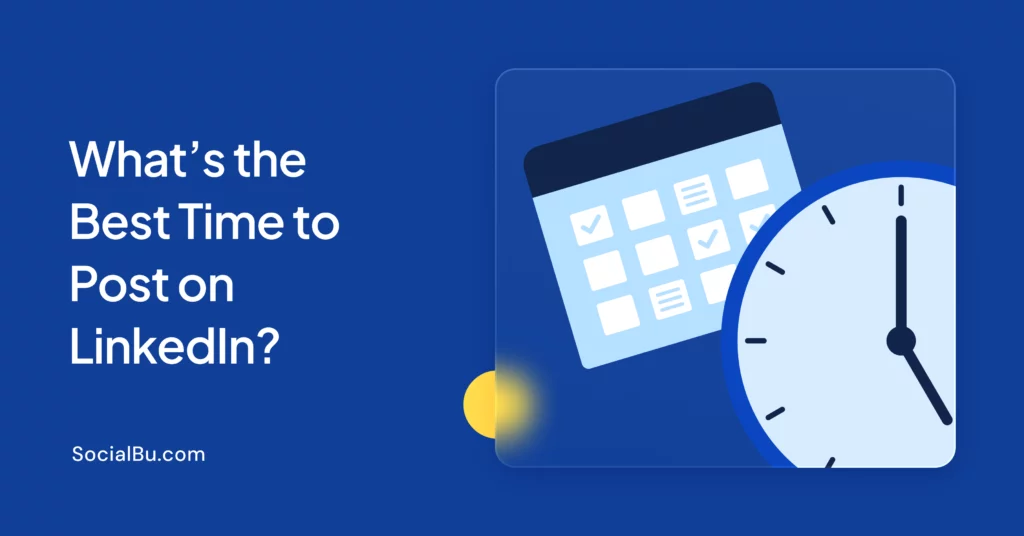Imagine a world where every interaction is a potential sale. This is the power of social selling. In today’s digital age, consumers are more connected than ever before. They research products, seek recommendations, and make purchasing decisions through social media platforms.
Social selling is the key to unlocking new opportunities, building lasting relationships, and driving sales growth. Let’s explore social selling, why it’s crucial for businesses today, and how you can harness its potential to achieve your goals.
What is Social Selling?
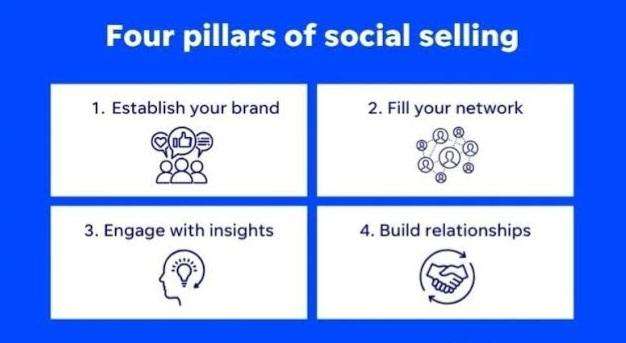
Social selling uses social media platforms to build and nurture relationships with potential customers. It’s about connecting with people, understanding their needs, and positioning yourself as a trusted advisor.
Unlike traditional sales tactics and cold calls, it’s a modern approach to building relationships online before selling. Businesses can generate leads and increase sales by sharing valuable content, joining relevant conversations, and building a robust online presence.
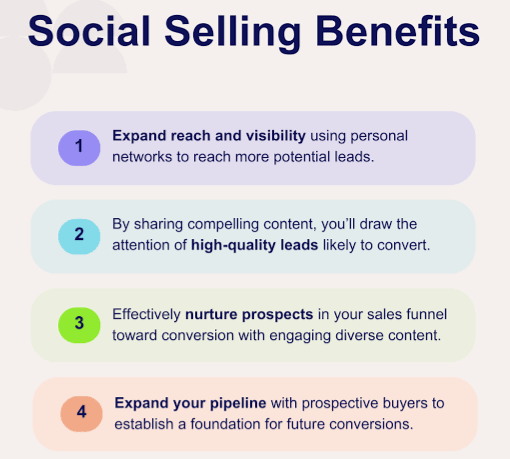
Social selling involves more than just posting on social media. It’s about actively listening to what your target audience is saying. Attention to what people are discussing can tailor your message and provide relevant information.
Traditional Social Selling
Traditional social selling often relied on a more direct approach. Salespeople primarily used social platforms to broadcast their products or services. This method focused heavily on promotion and less on building relationships and engaging with potential customers.
Common tactics include:
- Posting frequent product updates
- Sharing sales promotions and discounts
- Directly pitching products to potential customers
- Focusing on quantity over quality of interactions
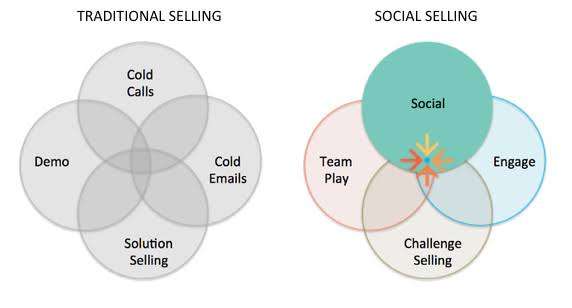
Inbound Social Selling
Have you ever thought about social selling in the inbound way?
It’s about providing value to your target audience via your content, positioning yourself as an industry expert, and attracting potential customers actively seeking solutions to their problems. In return for their problems, you offer your product or service as a solution.
Fun Fact: 48% of customers discover a brand for the first time on social media.
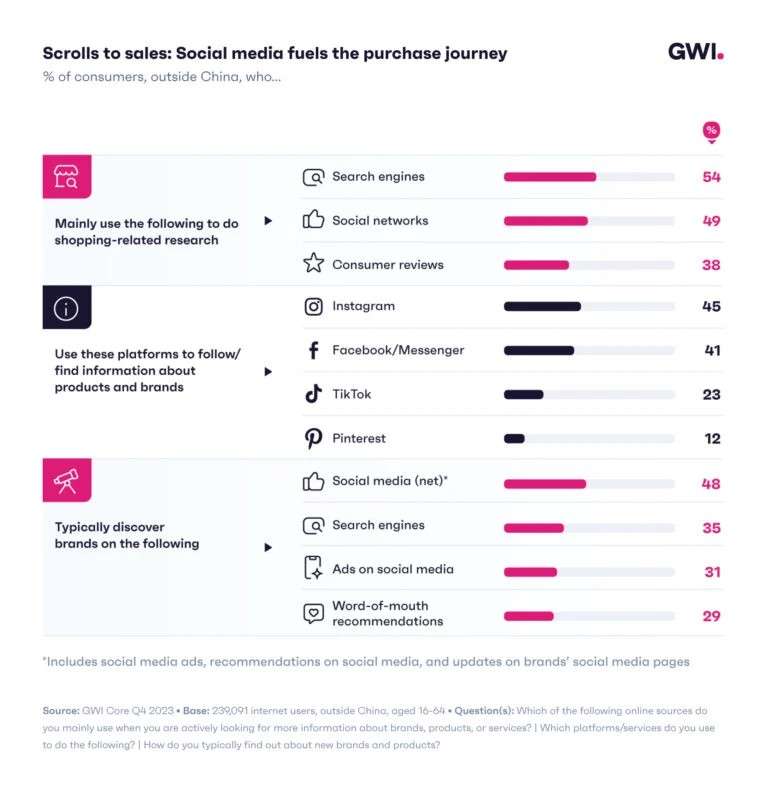
Source: GWI
What is the Social Selling Index (SSI)?
The Social Selling Index (SSI) is a score LinkedIn assigns to users based on their social selling activities. LinkedIn introduced it in 2014, and it measures the overall impact of your social media selling, how often you share valuable content, and how often you find potential customers.
LinkedIn calculates your SSI based on four key areas:
- Building a professional brand: A strong personal profile and engaging content contribute to your brand.
- Finding the right people: Identifying and connecting with the right people/potential customers on the platform.
- Engaging with insights: Sharing valuable and informative content and participating in discussions.
- Building relationships: Nurture connections and build trust with thought-leaders for long-term success.
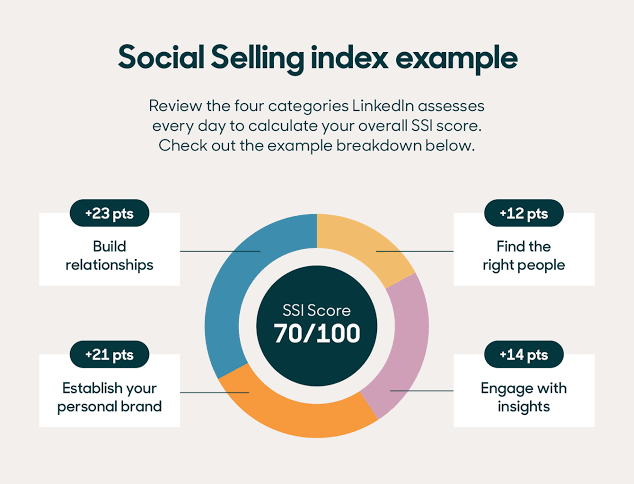
To find your LinkedIn SSI score, navigate to your LinkedIn account and Social Selling Index dashboard. Understand your SSI score and improve your social-seeking performance accordingly.
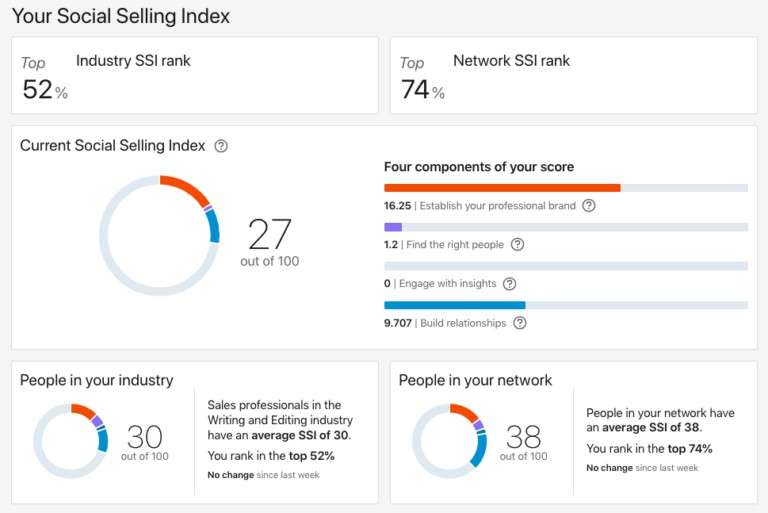
Source: LinkedIn
The higher SSI score indicates that you effectively use LinkedIn’s social selling techniques.
What are the Best Networks for Social Selling?
Choosing the right social selling platform is crucial for success. Each platform has unique features and audiences. However, the best social selling platform depends on your target audience, needs, and business/social selling goals.
LinkedIn: This platform is ideal for B2B businesses and professionals. It focuses on professional networking, perfect for building relationships with potential clients. LinkedIn offers features like InMail, Sales Navigator, and company pages to help with lead generation and sales.
As per LinkedIn, 89% of B2B marketers use LinkedIn to generate leads for their business.
Facebook: This is a versatile social selling platform suitable for B2C and B2B businesses. Use It to create engaging content, run targeted ads, and join relevant groups to connect with your audience.
Instagram: This visually focused platform is perfect for showcasing products or services. Its strong emphasis on storytelling and visuals makes it ideal for building brand awareness and engaging with customers. Explore features like Instagram Shopping to sell products directly.
Twitter: Use Twitter to share industry news, engage in conversations, and build relationships with potential customers. Its fast-paced nature requires quick and relevant content.
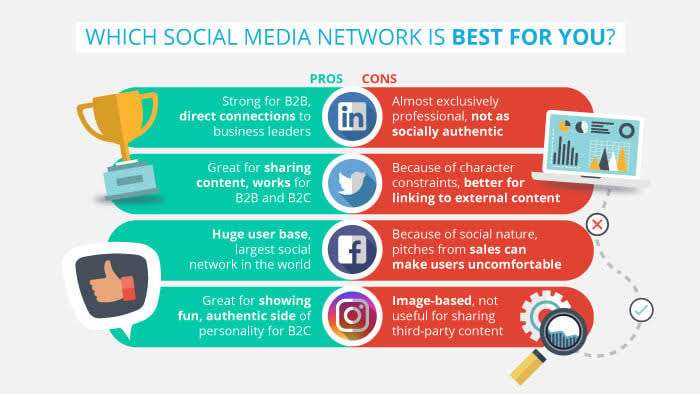
TikTok: With 1.04 billion monthly active users worldwide, this platform is rapidly growing and offers unique opportunities for social selling. Create short, engaging videos to showcase your products or services and reach a younger audience.
How to Get Started with Social Selling
Social selling is about building relationships online to generate leads and sales. To start, focus on platforms where your target audience spends time. Let’s learn how you can socially sell on major social media platforms:
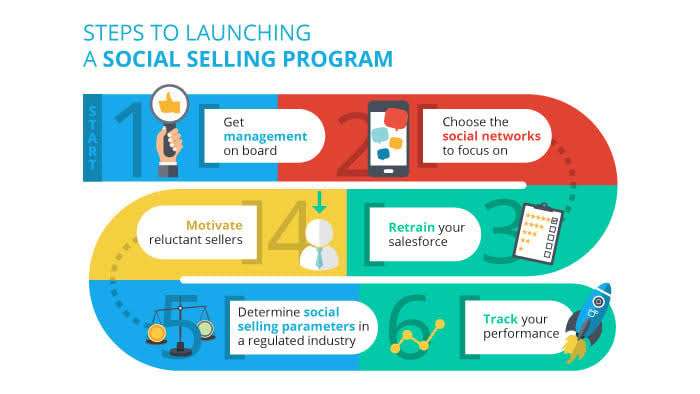
A. Social Selling on LinkedIn
With 770.97 million professional users, LinkedIn is a prime platform for social selling. It’s a place where professionals connect, share knowledge, and build relationships.
1. Build Your Credibility
Your LinkedIn profile is your digital resume. Make sure it’s complete, professional, and showcases your expertise. Highlight your skills, experience, and accomplishments.
Ask for endorsements and recommendations from previous clients and peers. This will increase your visibility on the platform and provide you with authority.
The LinkedIn algorithm adds value to informative content, sharing expert knowledge and practical advice/solutions. So, share valuable and relevant content regularly to position yourself as an industry thought leader.
Fun Fact: According to research, 75% of buyers claim thought leadership on LinkedIn helps them decide which brand to shortlist.
2. Expand Your LinkedIn Network
Building a strong LinkedIn network is crucial for social selling. Connect with people in your industry, potential customers, and other professionals. Like your connection’s posts and post valuable comments.
This will increase your credibility and help you attract new audiences. Moreover, join relevant LinkedIn groups to participate in discussions and share your insights.
3. Try LinkedIn Sales Navigator
LinkedIn Sales Navigator is a premium tool that can supercharge your social selling efforts. It provides advanced search features, lead recommendations, and insights into account activity. It also helps you better understand your performance with analytics.
B. Social Selling on Facebook
Facebook is the top social media platform for Baby Boomers and Gen Z, who are likely to have a high purchasing ratio.
To start social selling on Facebook, create a Facebook Page or turn on professional mode for your Facebook profile, and then follow the strategies mentioned below.
1. Create Shareable Content
To succeed at social selling on Facebook, you must share content people want to see. Understand the Facebook algorithm and focus on creating valuable, engaging, relevant posts for your target audience.
Use images, videos, and infographics to capture attention. Keep your content informative and engaging rather than overly promotional.
Share a mix of content types, including:
- Industry news and trends: Stay updated on your industry and share relevant news articles.
- How-to guides and tips: Offer practical advice to help your audience solve problems.
- Customer stories and testimonials: Showcase satisfied customers to build trust.
- Behind-the-scenes content: Give your audience a glimpse into your business.
- Company culture and values: Share what makes your company unique.
Tip: Reels, in particular, get you more engagement and views and ultimately grow your audience, so add them to your content strategy, too.
2. Engage with Your Followers
Interact with your followers by responding to comments and messages promptly. Ask questions to encourage discussion and show genuine interest in their opinions.
Join relevant conversations and offer valuable insights. Consistent engagement helps you build trust and credibility.
Fun Fact: 42% of consumers expect a response on social media within 60 minutes
3. Join Facebook Groups
Facebook groups provide opportunities to connect with potential customers. Find groups related to your industry or target audience. Contribute to discussions by sharing valuable information and answering questions.
However, avoid self-promotion and focus on building relationships. Over time, you can establish yourself as an expert and generate leads.
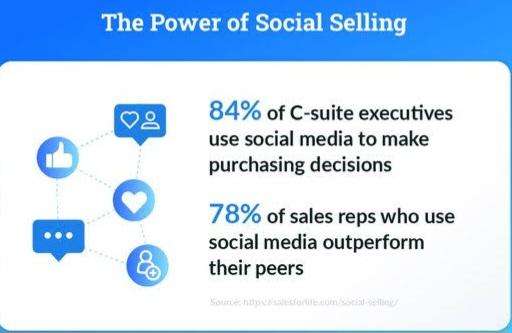
C. Social Selling on X (Twitter)
Twitter is an excellent platform for social selling via social listening. Twitter Lists allows you to monitor content and reach a broad audience.
Here’s how to use it effectively:
1. Existing Customers
- Engage regularly: Interact with your customers by liking, commenting, and retweeting their posts. This will help you keep your brand in their eyes and build a solid connection.
- Offer support: Quickly respond to customer questions or complaints.
- Share customer success stories: Highlight positive experiences with your product or service.
2. Prospects
- Identify your target audience: Understand who you want to reach/target on Twitter and add them to a private sheet. Now, engage with them meaningfully and respond to their queries and questions promptly.
- Use relevant hashtags: Increase your visibility by using popular hashtags.
- Share valuable content: Offer helpful information or insights related to your industry.
3. Competitors
- Monitor their activity: List your competitors and track what they do on Twitter.
- Learn from their successes: Identify what works well for your competitors.
- Identify opportunities: Find gaps in their social media strategy and implement them in your social selling.
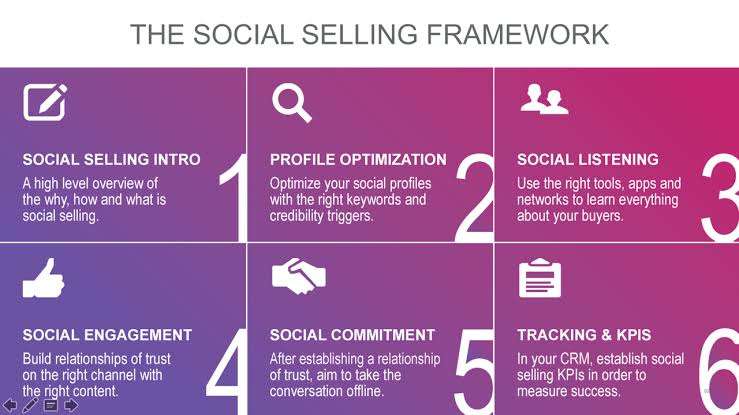
5 Useful Social Selling Tools
Here’s a list of the top valuable tools you can use for your social selling needs:
1. SocialBu
SocialBu is an all-in-one social media management tool that helps businesses excel in social selling. Its user-friendly interface allows you to manage multiple social media accounts efficiently.
The Unified Social Media Inbox feature helps you manage all your conversations with your followers and people interested in your business in one place.
This feature provides valuable insights into audience behavior and content performance, helping you tailor your content strategy accordingly.
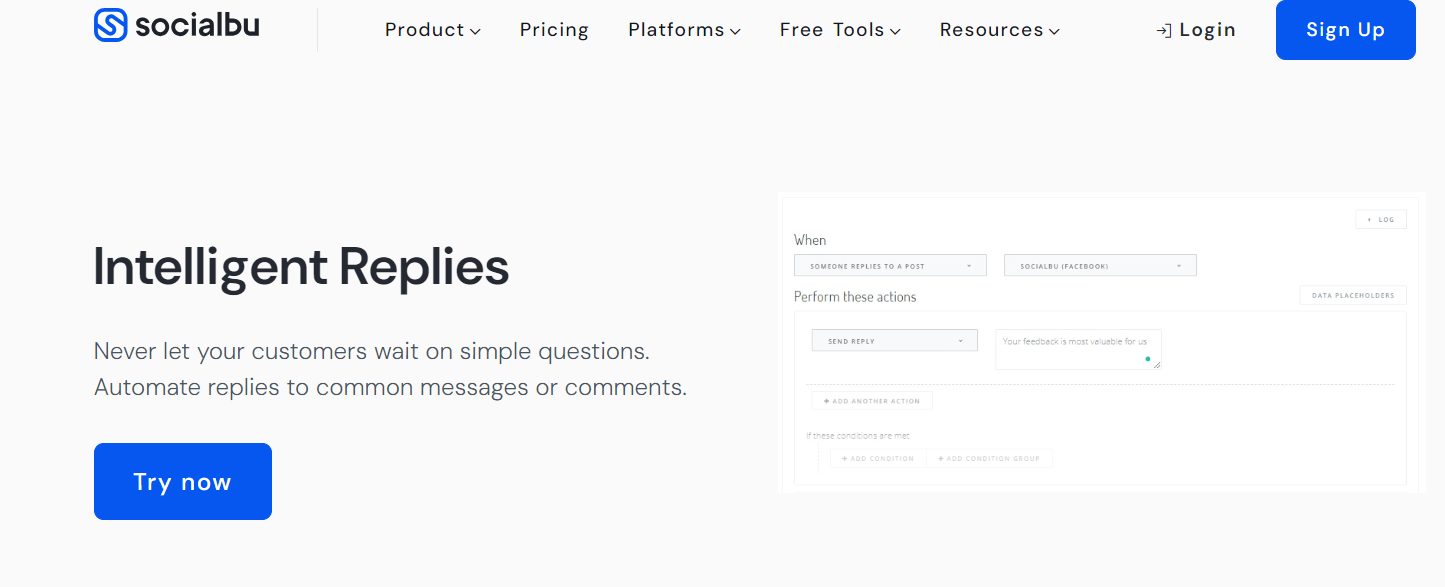
Moreover, SocialBu offers advanced features like automated posting, analytics, and customer relationship management (CRM) integration, making it a powerful tool for sales teams.
2. Hootsuite
Hootsuite is a well-known social media management platform catering to social selling needs. It enables you to schedule posts, track mentions, analyze performance across various social channels, and get AI sentiment analysis.
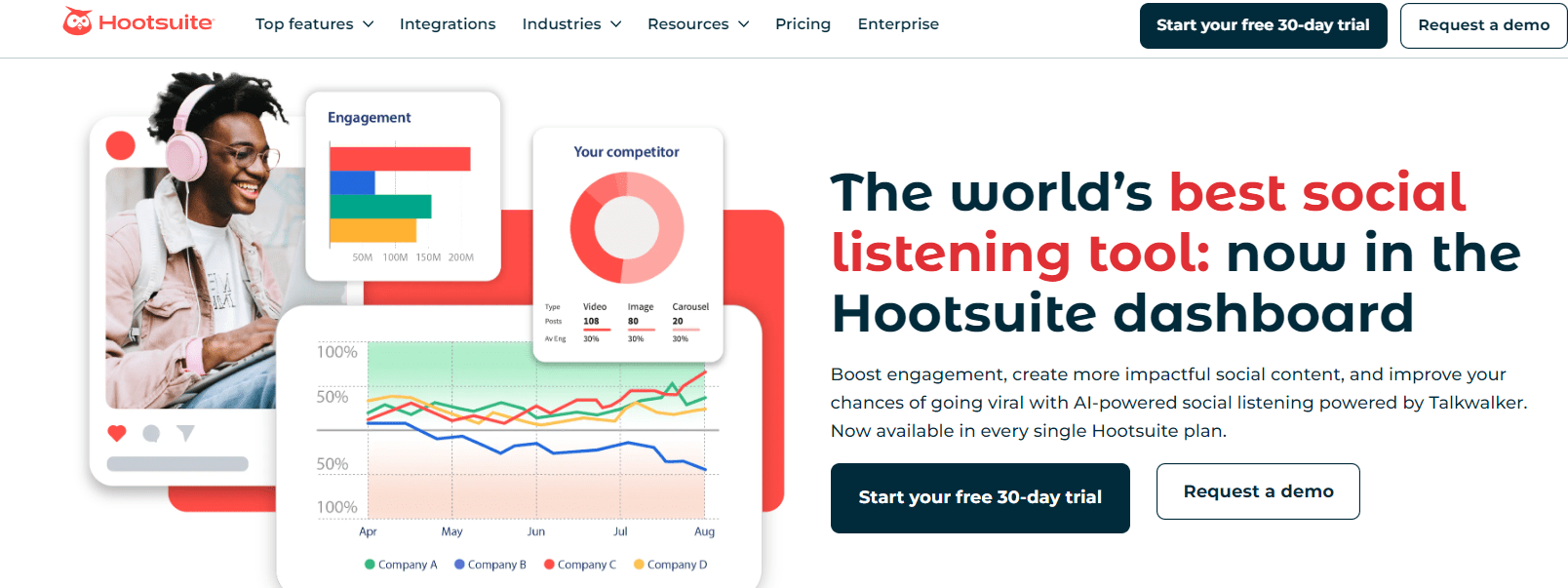
Hootsuite’s collaboration features allow teams to work together efficiently, ensuring consistent messaging. Hootsuite inbox connects to your CRM and helps you manage your social media conversations in one place, helping you understand customer sentiment and identify potential leads.
You can also listen to or monitor what other people say about your brand online. Moreover, the tool offers analytics to help you measure the impact of your social selling efforts.
3. SugarCRM
SugarCRM is a smart CRM platform that helps you improve your sales productivity. Its AI-powered sales capabilities help your brand salesperson track customer interactions, identify sales opportunities, and focus on the right deals.
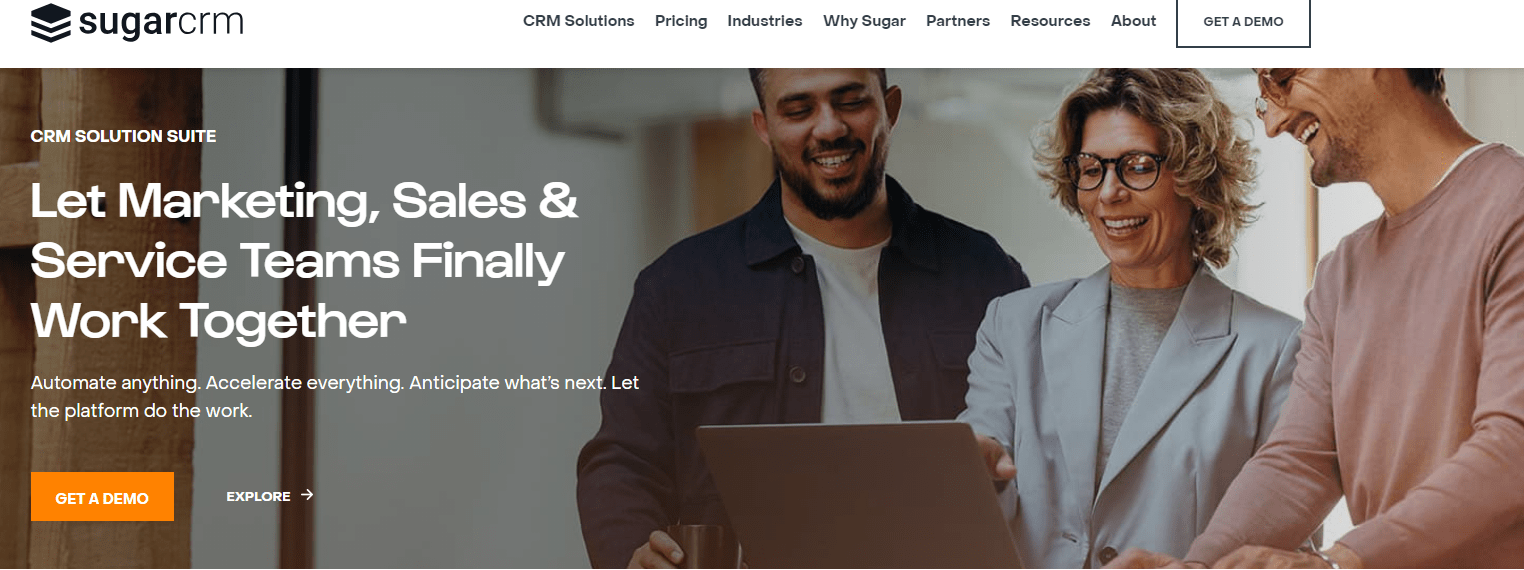
SugarCRM’s social listening capabilities help you convert fillers into potential leads and search records. By integrating social data with your CRM, you can identify and create leads and cases based on social posts and gain valuable insights into customer behavior and preferences.
4. Hubspot
This popular platform offers a robust suite of marketing, sales, and customer service features, including social selling features. Its CRM platform allows you to track social media interactions and integrate them with your sales pipeline.
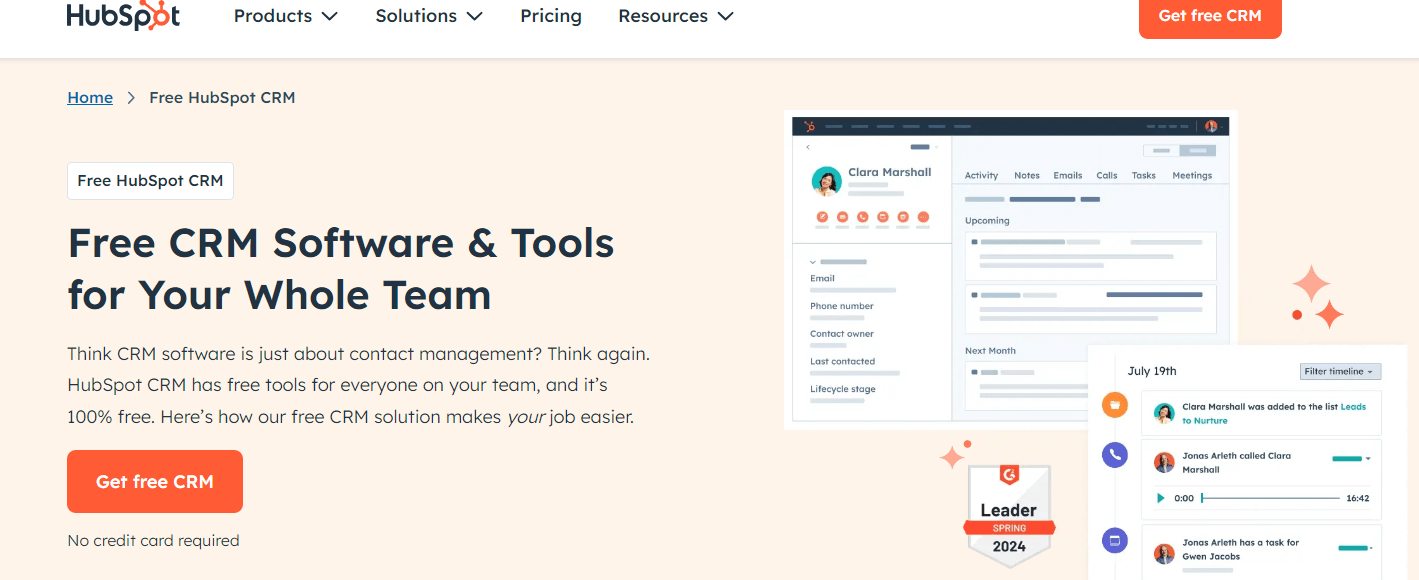
Hubspot’s social monitoring features help you identify potential leads and engage with them proactively. This platform also imports social interaction conversations from Facebook and Twitter (X).
It provides analytics to improve your lead-scoring models and measure the impact of your social selling efforts.
5. Salesforce
This is another leading AI-powered CRM that integrates social selling features into its core offering. It enables sales reps to connect with prospects on social media, track interactions, and nurture leads.
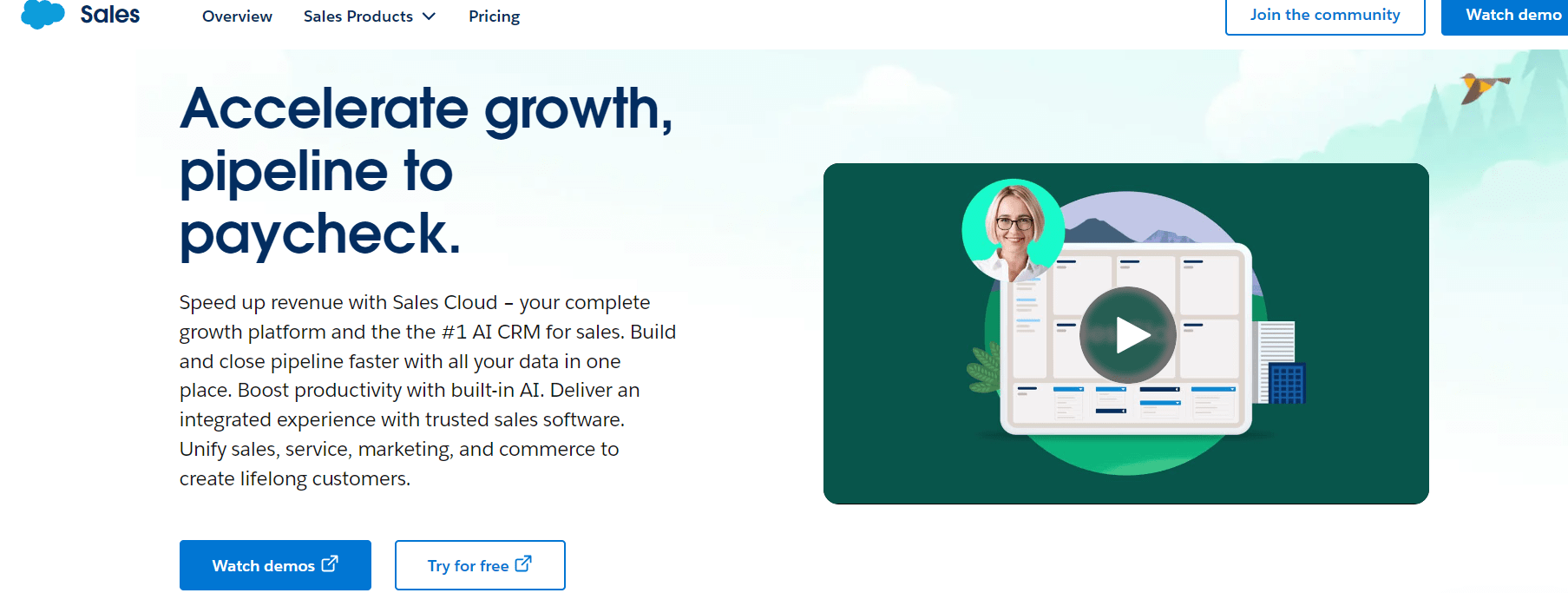
Salesforce’s social listening abilities help you monitor conversations about your brand and competitors. Combining CRM data with social insights allows you to understand your customers better, tailor your sales approach accordingly, and identify and capture sales leads.
Best Practices for Social Selling
Master social selling with these effective strategies:
Identify your Target Audience
Understanding your ideal customer is crucial. Analyze demographics, interests, and online behavior to tailor your approach to social selling.
Choose the Right Platforms
Not all social media platforms are created equal. Research where your target audience spends their time and focus your efforts there. Popular options include LinkedIn, Twitter, and Facebook.
Create Valuable Content
Don’t just bombard your audience with sales pitches. Share informative and engaging content that educates, entertains, or solves problems. This could include blog posts, articles, infographics, videos, or live streams.
Build Relationships
Social selling is about building genuine connections, not just collecting followers. Actively engage with your audience by responding to comments, participating in discussions, and offering helpful advice.
Fun Facts:
- 32% of people are likely to unfollow a business account for making generic or automated comments.
- 34% of people will unfollow a social account for being too self-promotional.
- As per Inc. Magazine, 96% of consumers don’t trust ads.
Leverage Social Listening
Use social media listening tools to monitor conversations about your industry and brand. This allows you to identify potential leads, address customer concerns, and stay ahead of trends.
Measure and Analyze
Track your social selling performance using key metrics like engagement rate, website traffic, and lead generation. Analyze the data to identify what’s working and what needs improvement.
Moreover, monitor your competitors’ online presence and their tactics to make your plan accordingly.
Sign up for a 7-day free trial now!
FAQs
What Does Social Selling Mean?
Social selling involves using social media platforms to build relationships with potential customers, share valuable content, and drive sales.
How Do You Sell on Social Media?
You sell on social media by engaging with your target audience, sharing helpful content, listening to their needs, and building trust. When the time is right, you can offer your products or services as solutions to their problems.
Does Social Selling Work?
Yes, social selling can be highly effective when done right. It helps you reach a wider audience, build credibility, and generate qualified leads.
What is Selling on Social Media?
Selling on social media is using social platforms to promote your products or services, engage with potential customers, and close deals.
What are the 5 C’s of Social Selling?
The 5 C’s of social selling are Connect, Converse, Create, Community, and Convert. These steps outline building relationships and driving sales through social media.
How to Start Social Selling?
To start social selling, define your target audience, choose the right platforms, create valuable content, engage with your audience consistently, and track your results. Build relationships, listen to customer needs, and convert followers into customers.





